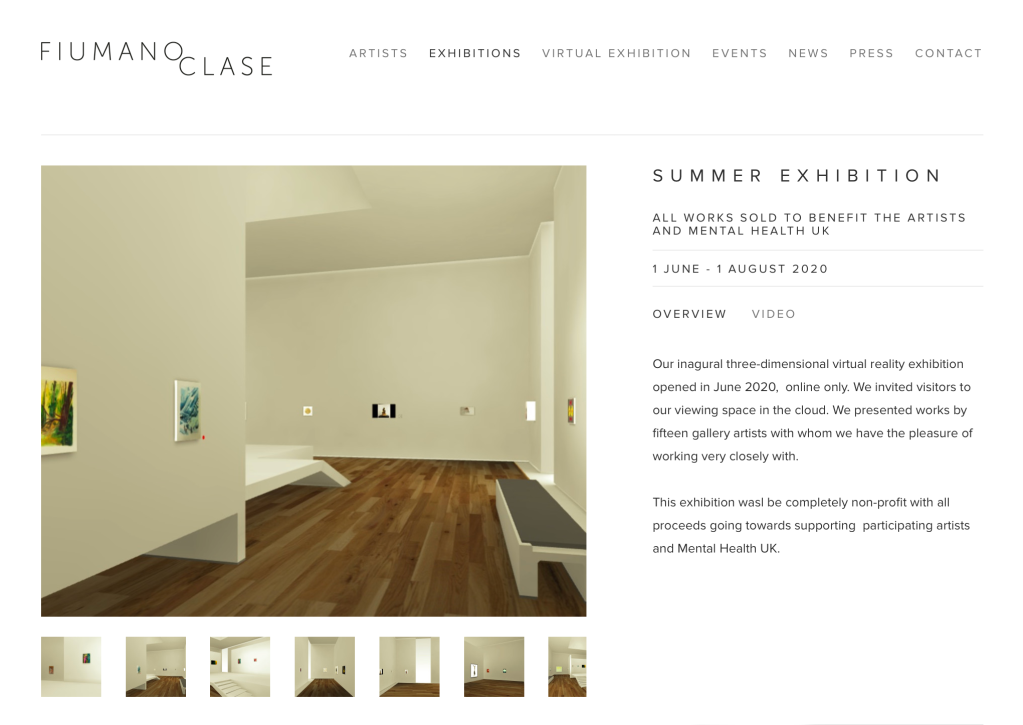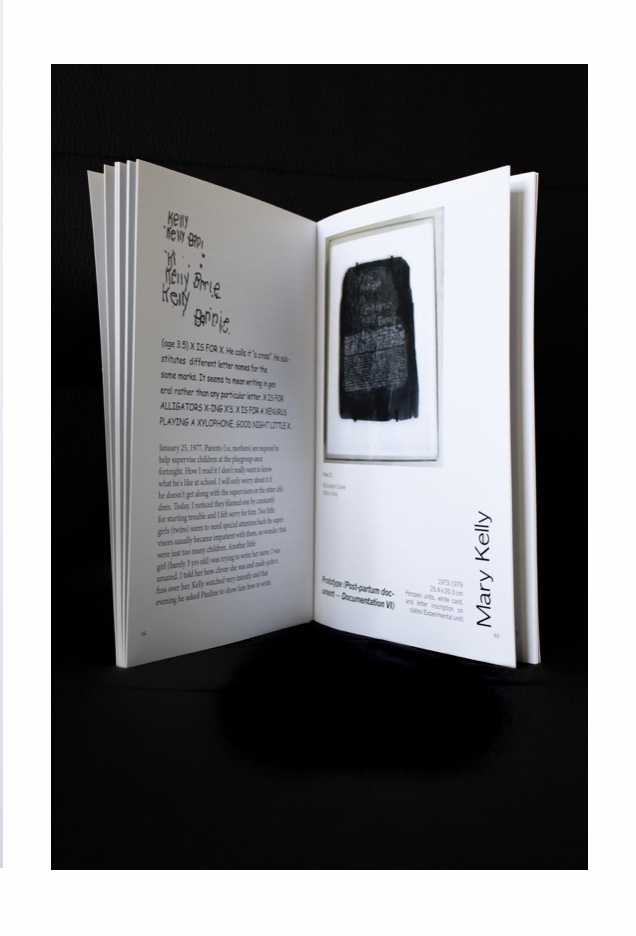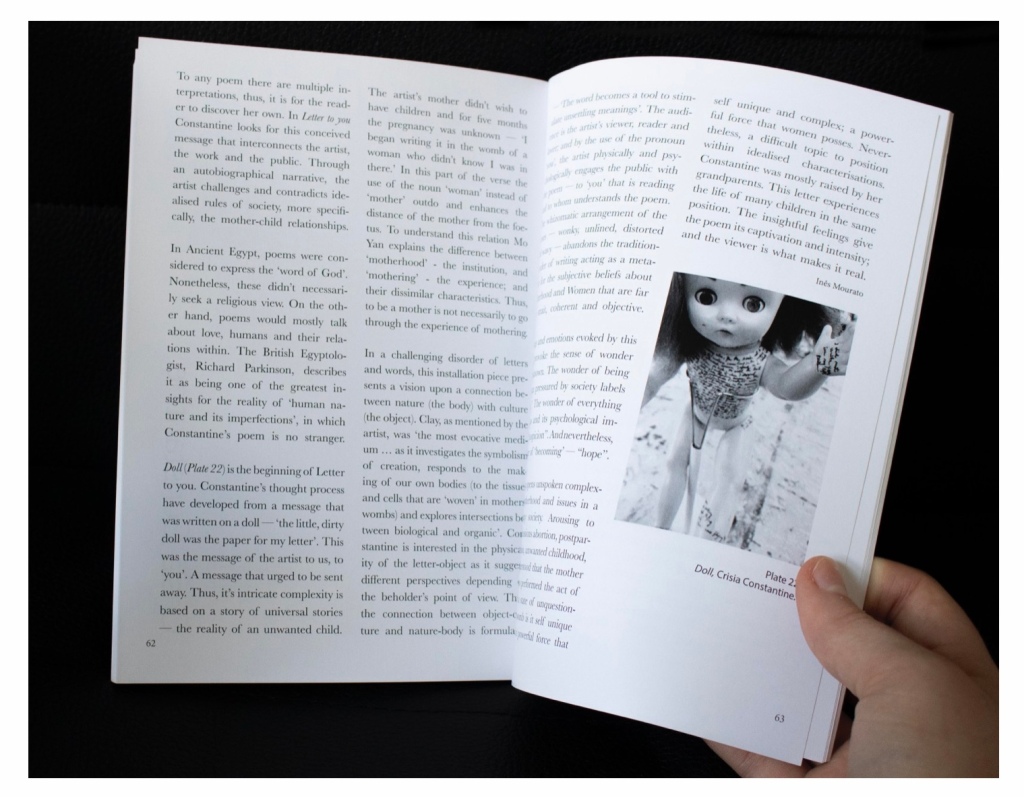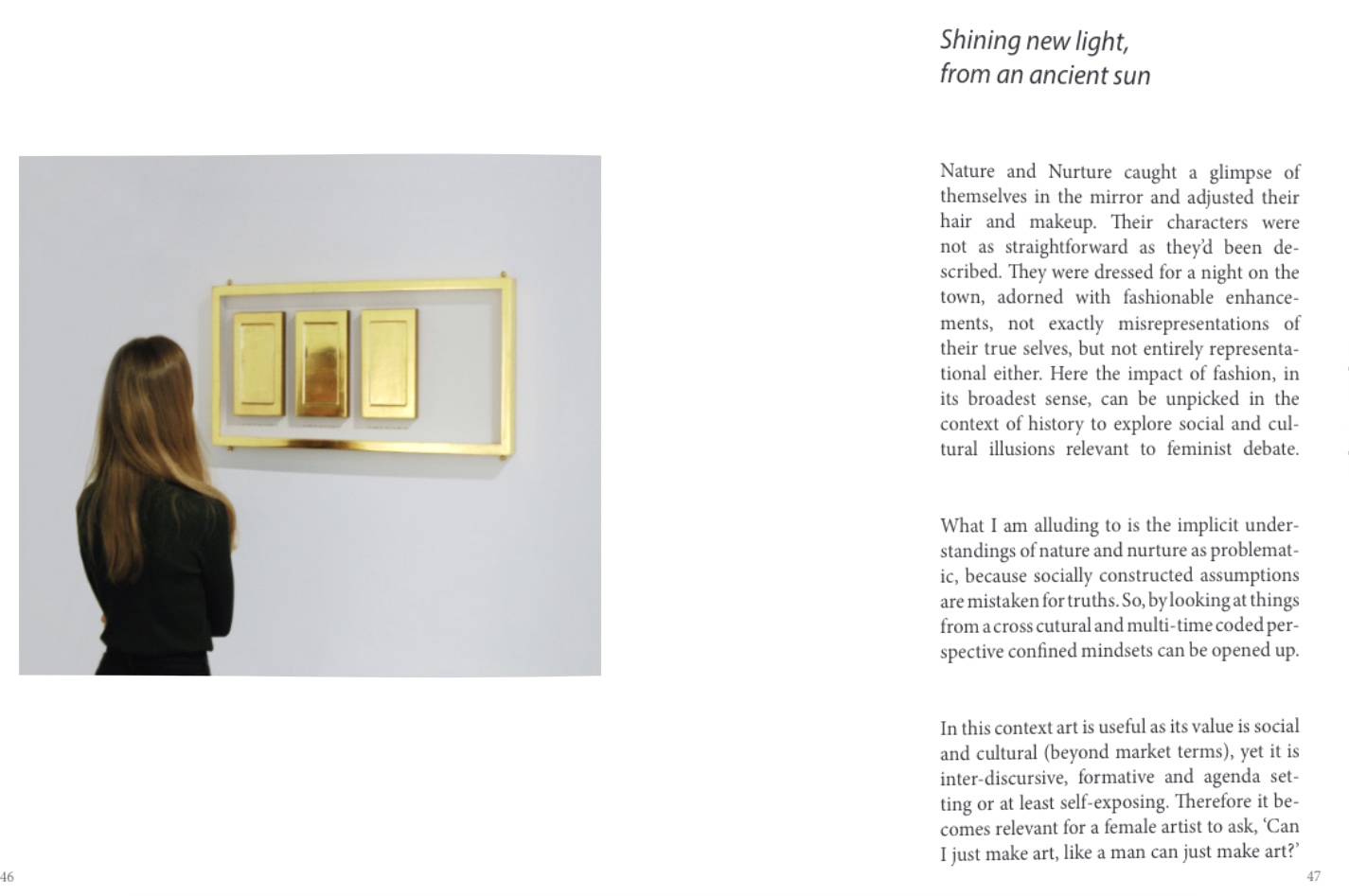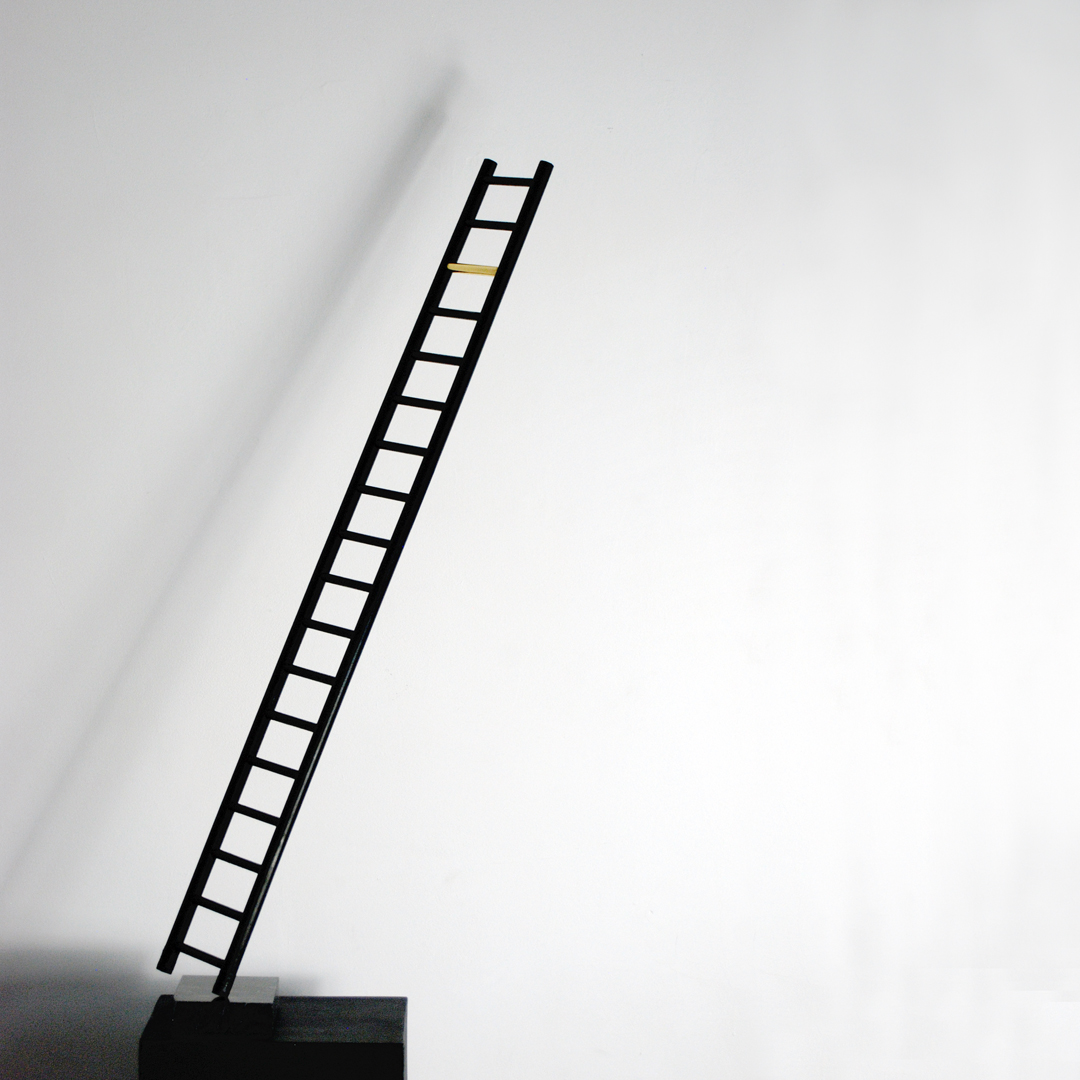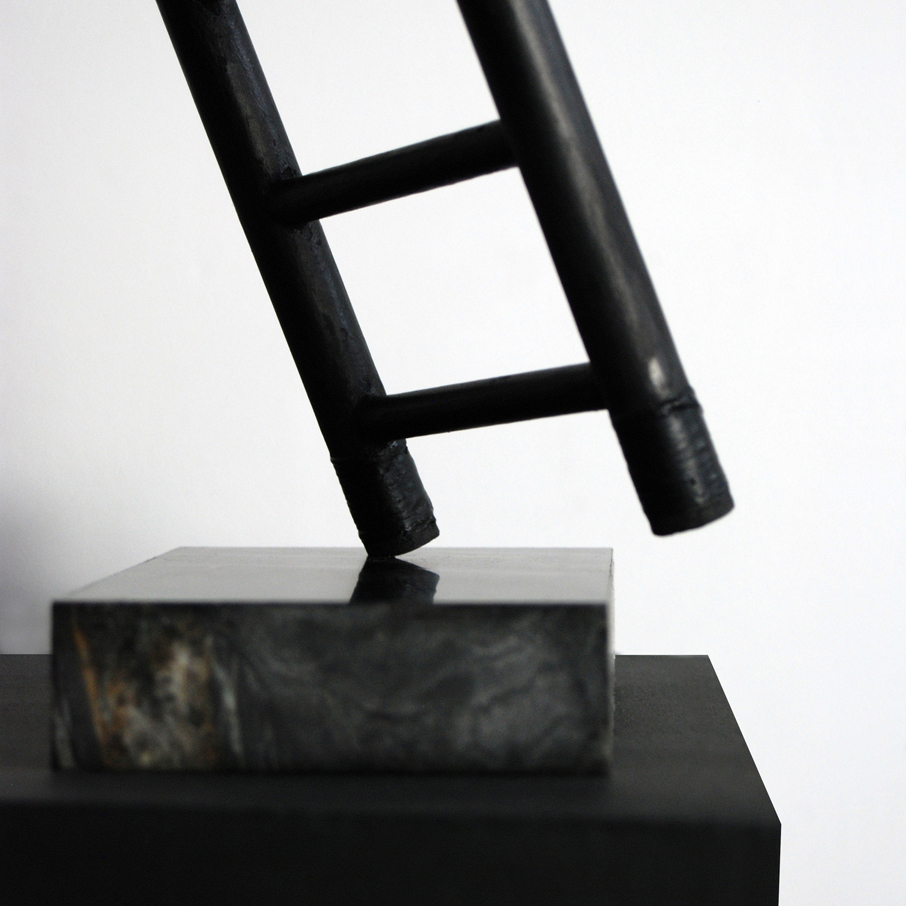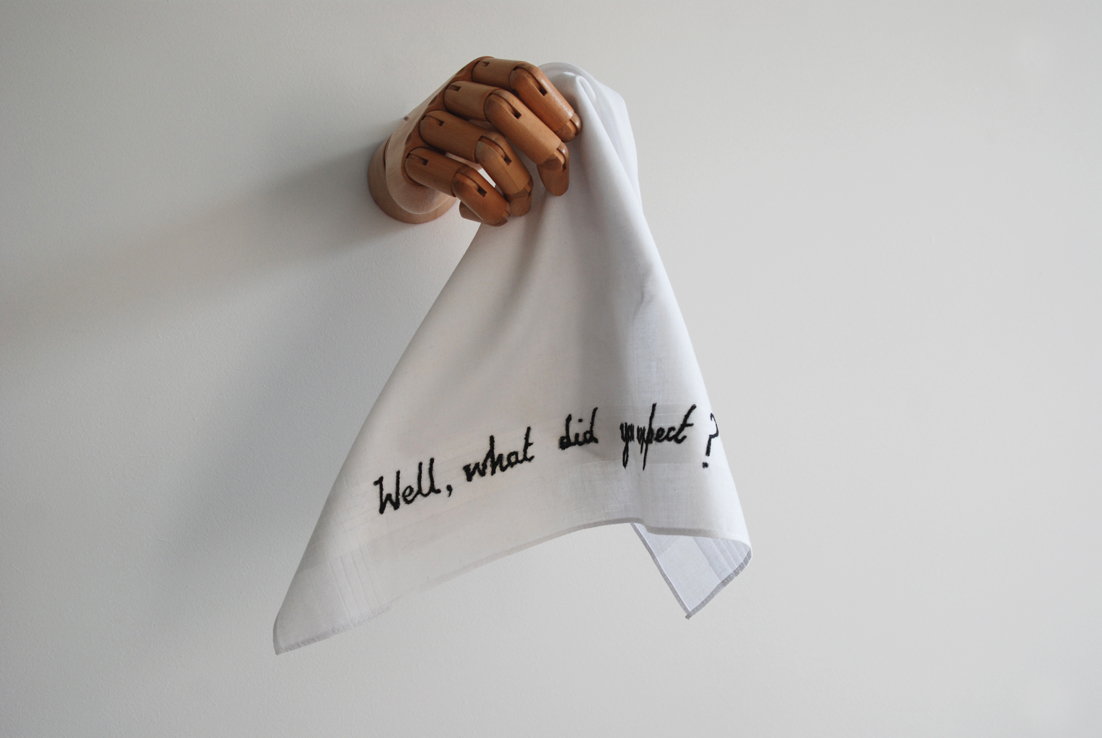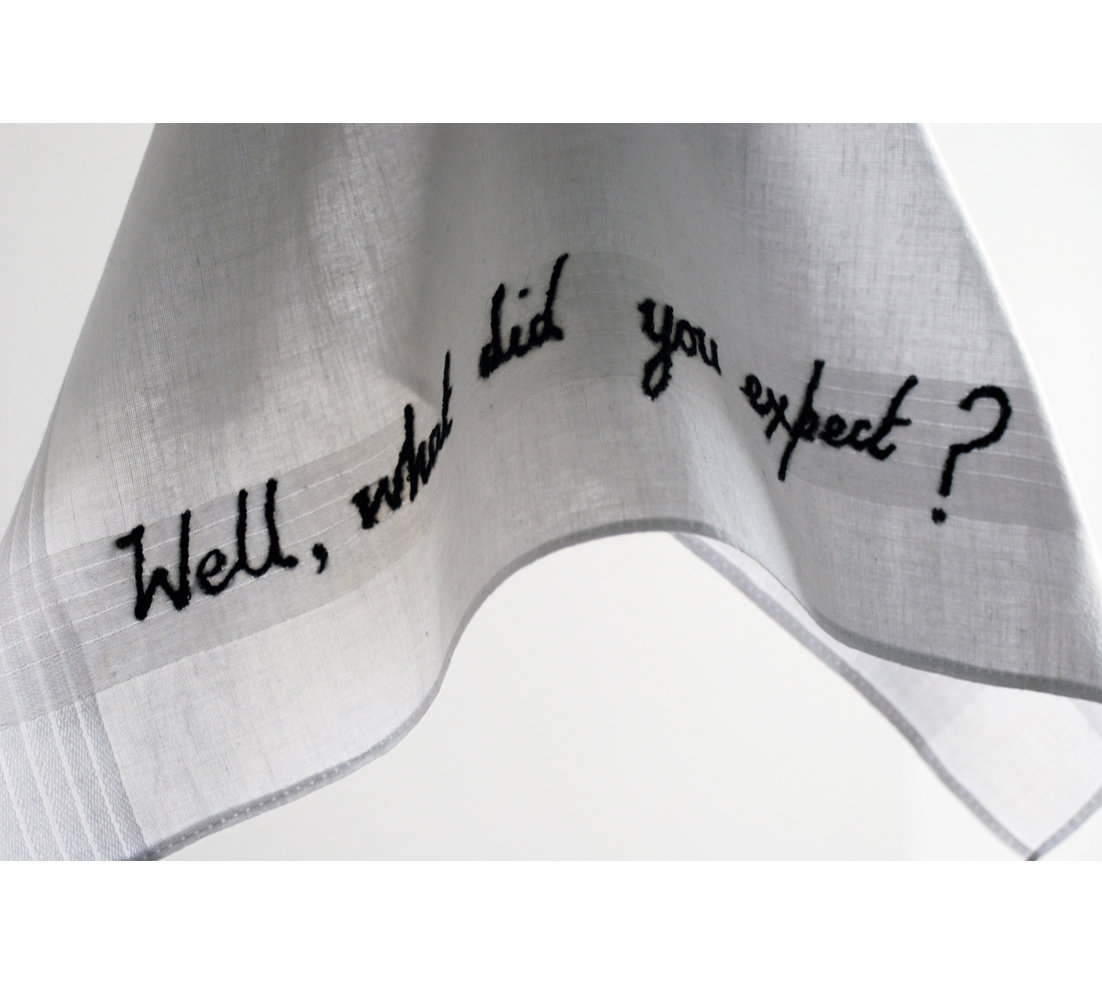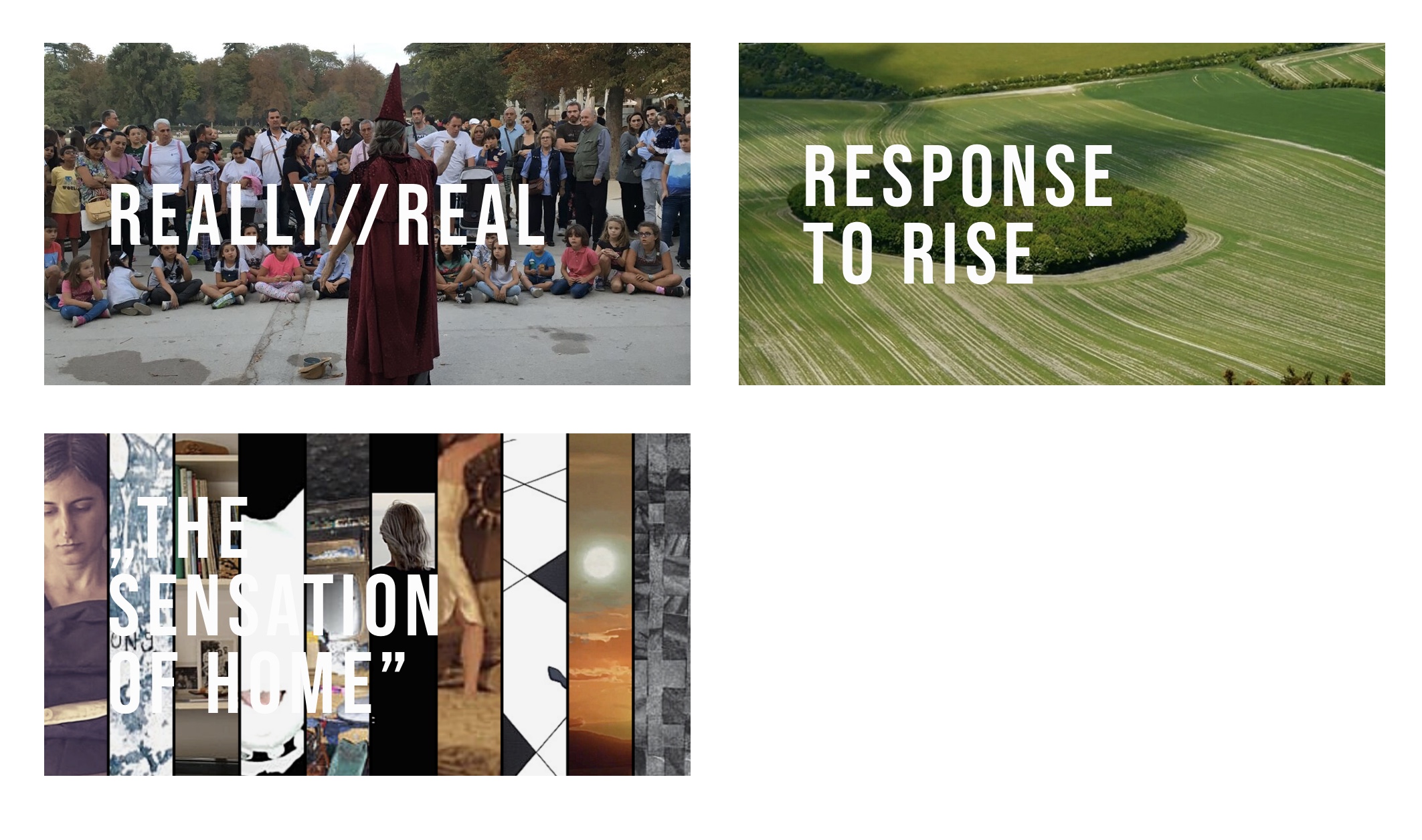Floating Narratives
In this work I have referenced stories from the people of Northern Australia and the Yolngu people and I acknowledge that First Nations peoples are the land’s first storytellers. I recognise their continuing connection to land, water and community, and pay my respects to Elders, past and present.

Mobile as part of new collection Poetry in Emotion. This image is of Wariunpranili and links to the Dreamtime stories from the people of Northern Australia. It captures the feminine sun image, the reverse captures the masculine moon image. The second balancing disc, by Ines Mourato captures the opposite; the moon as feminine and the sun as masculine.
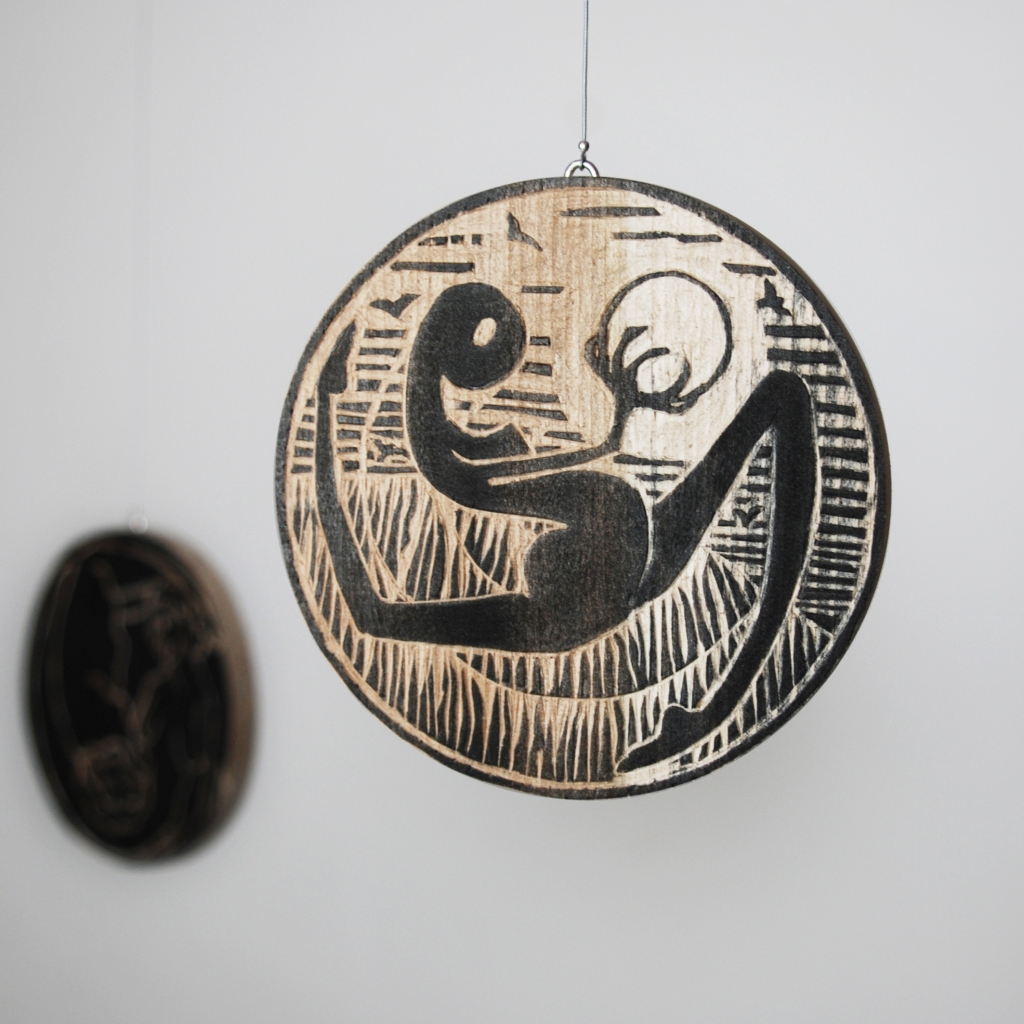
Story of the Sun from the people of Northern Australia It is dark when Wariunpranili wakes. She builds a small campfire and beautifies herself with ochre, the spilt powder colours the clouds. The birds keep her company, their singing wakes the people; letting them know the sun is coming. Wariunpranili makes a torch of stringy bark, it is the sun, and she carries it across the sky from east to west. When she reaches the west she goes behind the horizon and reduces her torch to a glow, she decorates herself in ochre and the spilt powder colours the clouds. Night falls as she enters the underground tunnel, that leads back to morning camp, her torch lights her way and warms the earth so the plants grow.
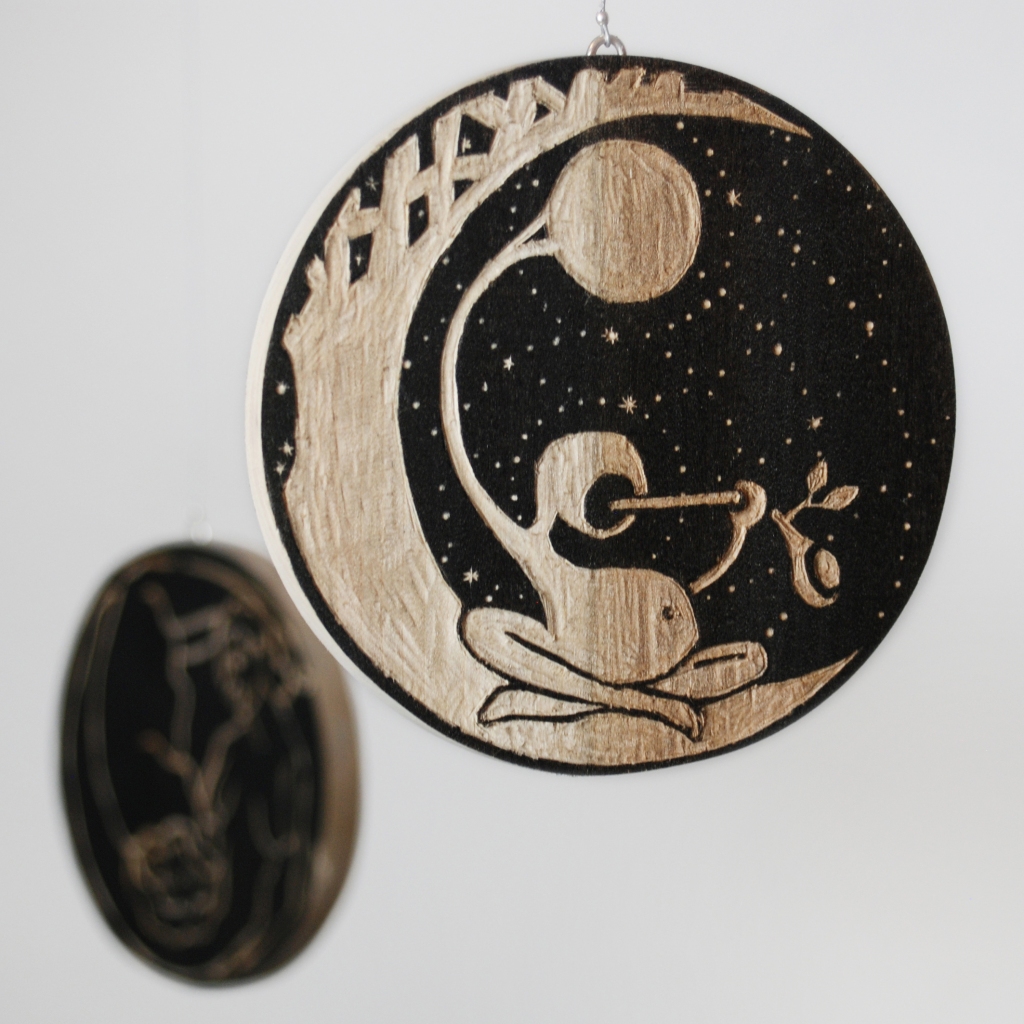
The story of the moon from the Yolngu people Ngalindi was so lazy and greedy that he grew and grew until he was round and fat. This made his wives angry; they threw axes to cut bits of him off. So he climbed a tree to follow the sun and escape, but he was fatally wounded. As Ngalindi died he cursed animals and people so they would no longer be immortal, only he would return to life. Each month he is reborn as the waxing moon, he eats and eats until he is full and his wives throw axes so he becomes the waning moon. With the final blow he dies and remains dead for three days before he is reborn into the new cycle.

In Dispraise of the Moon
by Mary Elizabeth Coleridge
I would not be the Moon, the sickly thing, To summon owls and bats upon the wing; For when the noble Sun is gone away, She turns his night into plaid day. She hath no air, no radiance of her own, That world unmusical of earth and stone. She wakes her dim, uncoloured, voiceless hosts, Ghosts of the Sun, herself the sun of ghosts. The mortal eyes that gaze too long on her Of Reason’s piercing ray defrauded are. Light in itself doth feed the living brain; That light, reflected, but makes darkness plain.
Once upon a time, and Now!

Studio 3 Gallery, Canterbury
Group show exploring feminism through Ancient Egyptian wisdom and Goddesses. Ancient artefacts exhibited alongside contemporary artworks.
Curated by
Dilettante D’Antoni – Archaeologists & curator. Studied at University of Bologna and Sorbonne. Recently involved in the translation of Punic stela’s from Rijksmuseum Van Oudhedon. Currently working at Palazzo Medici Ricardo, Tutankhamun Exhibition .
Ines Mourato – Artist & curator. Studied MA curation at the University for the Creative Arts Canterbury. Recently involved in Future Foundry, Canterbury Festival and Curatorial Placement at University of Kent UCA.
Junwei Chen – Ceramicist and curator. Won the Design Award of Excellence from Shenzhen China.
Exhibition
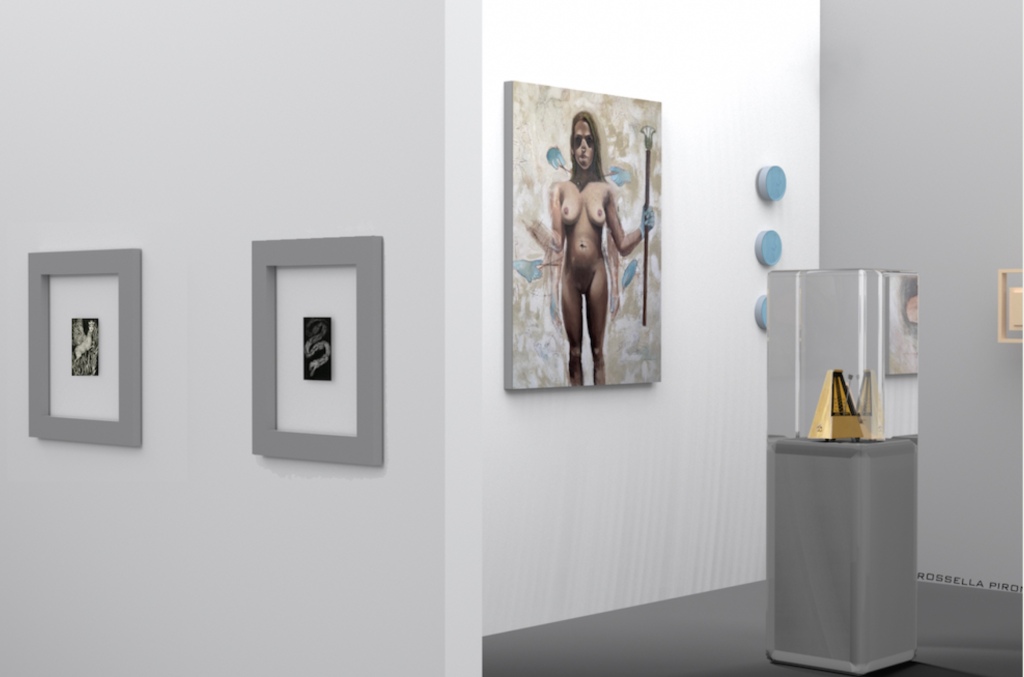
From left to right Ana Maria Pacheco, Silvia Paci and Nicole Wassall
Artwork by Nicole Wassall, Mary Kelly, Nancy Spero, Ana Maria Pacheco exhibited alongside ancient representations of the goddess Isis; she was considered the wisest Egyptian god.

Poster and Catalogue
Catalogue for show alongside poster. Text written about each artist by curators. In addition, I was commissioned to write a piece as a contributing artist, see below.
The Point of No Return
A continuation along the Precious Mettle theme. A ladder stands up precariously, the bottom of the ladder is painted in egg tempera and aesthetically references ancient ladders, the paint merges seamlessly into Indian ink, which has a sharp modern look. The ladder is punctuated with one golden rung, which is water gilded to look like solid gold. The piece is mounted on a block of dark marble.

90cm high x 30cm x 30cm Wood, steel and marble. Painted with black egg tempera and Indian ink. Ladder reinforced with wax coated string. 24ct gold leaf applied on gesso to make ‘solid’ looking gold rung. £1600 $US2200 €1860
Well, what did you expect?
The handkerchief is held with the countenance of the ever day; a natural intimacy denoting surrender, comforter and farewell. Embroidery is visible, or partially visible, depending on how the wind blows. Meaningful but incomplete readings are seen, before the complete text is revealed.
It is impossible, as a female artist, not to be viewed through the ‘female’ lens. Samplers and historic uses of handkerchiefs become implicit in the work. However, unlike the samplers, this is not about technique but ingraining an idea into the fabric.
The piece embraces and moves on from the feminist sentiment In the flat handkerchiefs of Louise Bougeous and the original Suffragette handkerchief (signed by 68 women jailed in HMP for the WSPU window smashing activism in 1912).
To be viewed without the feminist lens, the piece stops being about the other, and the macro and micro ideas become relevant. The piece is then open as much to societal issues as the private world.
40cm high x 30cm x 30cm White cotton handkerchief, embroidered with black thread and held in wooden hand. £1200 $US1650 €1400
Fringe Arts Bath
Songs of the River
Songs of the River is a simple fable about a man and horse, where a unique story structure, together with words, creates meaning. Visuals and sound take on a dream like quality in an ongoing narrative that’s discretely informed by neuroscience.
Fish swimming, in black and white, borrow from fauvist principles by changing the ‘expected colour’ to something ‘unnatural’, stimulating the brain to make sense of the anomaly – a phenomenon studied by neuroscientists. This is combined with visuals that don’t directly narrate the story, creating a similar neurological response. The dream aesthetic and contrast are increased when the film is projected onto a black surface.
The audio sounds like waves and is inspired by the Pina Bausch ‘World Cities Ballet’, where a dancer uses the amplified sound of breathing through their nose into a closely held microphone. This piece uses the same idea, but is of someone’s breathing as they sleep. With a meditative quality the film encourages the viewer to relax into the piece, often finding their breathing co-ordinating with the breathing waves.
The subtitles, that scroll across the bottom, explore the nature of story telling and grammar; they adopt a spoken pace that gives the viewer time to fill in the gaps, rather than conforming to consistent subtitle timing and grammatical rules. The unconventional structure of the story becomes clear as the reader realises the story has both crossed over itself and looped, like an infinity symbol.
Fiumano Clase Summer Exhibition
Fiumano Clase has their first virtual show in June 2020, with 15 of the gallery artists. The show includes the pieces ’Well, what did you expect?’ and ’Equality’.
